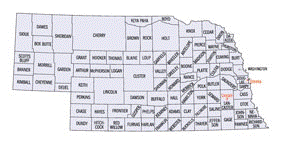Geography Program

Geography Program: Faculty Publications
ORCID IDs
http://orcid.org/0000-0002-2715-606X
http://orcid.org/0000-0003-2949-7818
Document Type
Article
Date of this Version
2017
Citation
ScIEntIfIc RepoRTS | 7: 10848 | DOI:10.1038/s41598-017-11423-6
Abstract
The role of household meat handling and consumption in the transfer of Staphylococcus aureus (S. aureus) from livestock to consumers is not well understood. Examining the similarity of S. aureus colonizing humans and S. aureus in meat from the stores in which those individuals shop can provide insight into the role of meat in human S. aureus colonization. S. aureus isolates were collected from individuals in rural and urban communities in Iowa (n = 3347) and contemporaneously from meat products in stores where participants report purchasing meat (n = 913). The staphylococcal protein A (spa) gene was sequenced for all isolates to determine a spa type. Morisita indices and Permutational Multivariate Analysis of Variance Using Distance Matrices (PERMANOVA) were used to determine the relationship between spa type composition among human samples and meat samples. spa type composition was significantly different between households and meat sampled from their associated grocery stores. spa types found in meat were not significantly different regardless of the store or county in which they were sampled. spa types in people also exhibit high similarity regardless of residential location in urban or rural counties. Such findings suggest meat is not an important source of S. aureus colonization in shoppers.


Comments
The Author(s) 2017